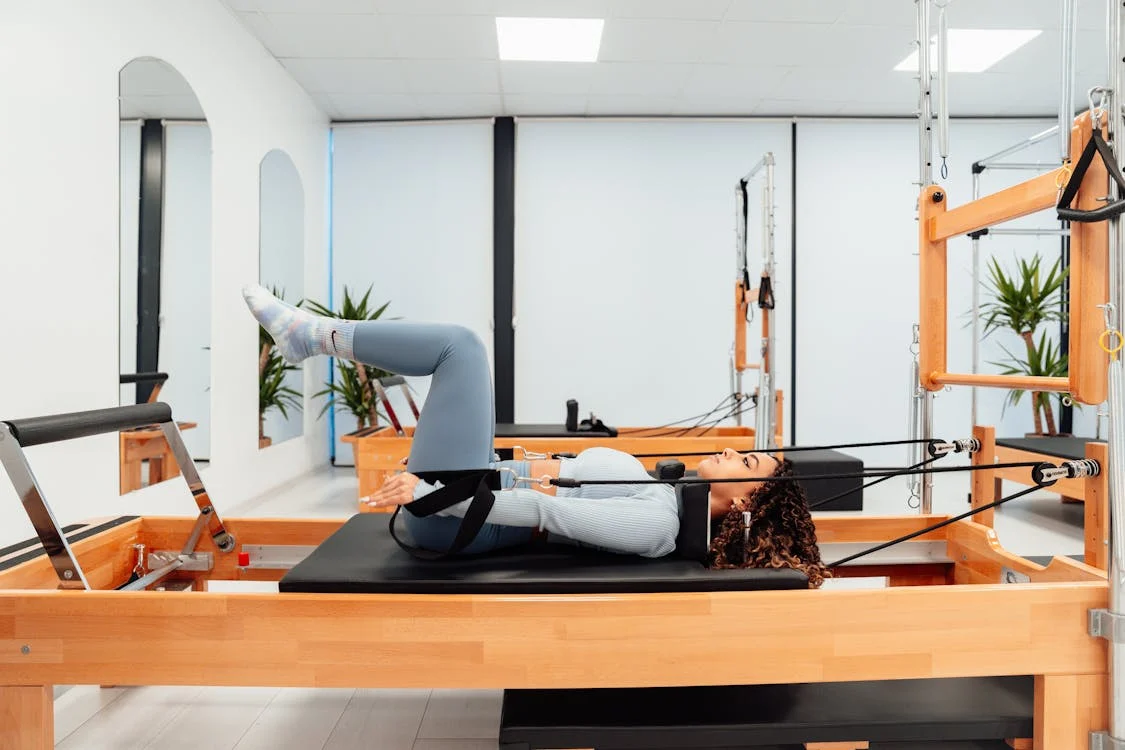 Mind
Mind
- Digital and Modern Well-being
- Mental Health and Emotional Well-being
- Mind-Body Connection and Holistic Health
- Parenting and Family
- Personal Growth and Development
- Relationships and Social Well-being
- Stress and Relaxation
- Therapeutic and Creative Practices
- Trauma and Recovery
- Work, Productivity, and Discipline
 Body
Body
 Fitness
Fitness
 Food
Food
 Beauty
Beauty
How to Build a Balanced Workout Routine

How to Build a Balanced Workout Routine
A balanced workout routine is essential for improving strength, endurance, flexibility, and overall fitness. A well-rounded program includes various types of exercises that target different muscle groups, prevent overuse injuries, and promote a healthier, more functional body. Whether you’re a beginner or experienced, creating a balanced workout routine can help you achieve your fitness goals effectively and sustainably. Here’s how to design a workout routine that covers all your bases.
1. Understand the Key Components of a Balanced Workout Routine
A balanced routine typically includes the following components:
- Cardiovascular (Aerobic) Exercise: Improves heart and lung health, endurance, and burns calories. Examples include running, cycling, swimming, and brisk walking.
- Strength Training: Builds muscle strength, increases bone density, and boosts metabolism. Includes exercises like weightlifting, bodyweight exercises, and resistance band workouts.
- Flexibility and Mobility: Enhances range of motion, reduces stiffness, and helps prevent injuries. Includes stretching, yoga, and mobility exercises.
- Balance and Core Stability: Improves posture, stability, and supports functional movement. Includes core exercises, balance work, and exercises like planks and single-leg movements.
Each of these elements should be incorporated into your weekly routine to promote overall fitness and reduce the risk of injury.
2. Set Clear Goals
Your workout routine should align with your fitness goals. Setting clear, specific goals helps you focus and tailor your exercises to meet your unique needs.
Examples of Common Goals:
- Build Muscle: Focus on strength training with progressive overload (gradually increasing weight or reps).
- Increase Endurance: Prioritize cardiovascular exercises, such as running or cycling.
- Improve Flexibility: Include regular stretching and mobility work.
- Enhance General Fitness: Combine a mix of cardio, strength, flexibility, and core exercises for well-rounded fitness.
Tip: Write down your goals and check in with them regularly to ensure your routine remains aligned with what you want to achieve.
3. Plan Your Weekly Workout Schedule
Determine how many days per week you’ll exercise and allocate specific days for each type of workout. Here’s an example of a balanced weekly schedule:
- Monday: Strength Training (Upper Body)
- Tuesday: Cardio (Moderate-Intensity)
- Wednesday: Flexibility and Mobility (Yoga or Stretching)
- Thursday: Strength Training (Lower Body)
- Friday: Cardio (Interval Training)
- Saturday: Balance and Core Stability
- Sunday: Rest or Active Recovery (light stretching, walking)
Tip: If you’re short on time, try combining cardio and strength training into a single session (like a circuit workout) or focus on full-body strength exercises.
4. Balance Muscle Groups in Strength Training
When planning strength workouts, it’s crucial to target all major muscle groups to ensure balanced development and reduce the risk of injury.
Key Muscle Groups to Target:
- Upper Body: Chest, back, shoulders, biceps, triceps.
- Core: Abs, obliques, lower back.
- Lower Body: Quadriceps, hamstrings, glutes, calves.
Example of a Full-Body Strength Routine:
- Push Exercises: Push-ups, chest press, shoulder press.
- Pull Exercises: Rows, pull-ups, lat pull-downs.
- Leg Exercises: Squats, lunges, deadlifts.
- Core Exercises: Planks, Russian twists, mountain climbers.
Tip: Perform 2–3 sets of each exercise, aiming for 8–12 repetitions per set with proper form.
5. Incorporate Both Aerobic and Anaerobic Cardio
A balanced cardio plan includes both steady-state (aerobic) and interval (anaerobic) workouts. Steady-state cardio improves endurance, while interval training boosts cardiovascular fitness and burns calories more efficiently.
Cardio Examples:
- Steady-State: 30–60 minutes of jogging, cycling, or brisk walking at a moderate pace.
- Interval Training: 20–30 minutes of alternating high-intensity efforts with low-intensity recovery (e.g., 1 minute of sprinting, followed by 2 minutes of walking).
Tip: Aim for at least 150 minutes of moderate-intensity cardio or 75 minutes of high-intensity cardio each week.
6. Don’t Forget Flexibility and Mobility
Including flexibility and mobility work is essential for maintaining a full range of motion, preventing injuries, and aiding recovery. Ideally, add stretching and mobility exercises at the end of each workout or dedicate a day specifically to flexibility training.
Effective Flexibility Exercises:
- Dynamic Stretching: Arm circles, leg swings, and other controlled movements for warming up.
- Static Stretching: Holding stretches for 15–30 seconds post-workout (e.g., hamstring stretch, quad stretch).
- Mobility Work: Joint rotations, deep squats, and foam rolling to improve joint health and flexibility.
Tip: Include at least 10 minutes of stretching or mobility work per day, especially if you have tight areas or sedentary habits.
7. Prioritize Core and Balance Training
Core and balance exercises are essential for stabilizing your body and enhancing functional movement, which is especially beneficial as you age. Integrate these exercises into your routine 2–3 times per week.
Effective Core and Balance Exercises:
- Planks: Great for building core stability.
- Single-Leg Exercises: Single-leg deadlifts or lunges help improve balance.
- Rotational Exercises: Russian twists and wood chops build core strength and coordination.
- Stability Ball Work: Try exercises on a stability ball to engage your core and challenge balance.
Tip: Mix core exercises into other workouts or add a short core-focused session to the end of your cardio or strength workouts.
8. Schedule Rest and Recovery Days
Rest and recovery are essential for muscle repair, growth, and avoiding burnout. Plan at least one full rest day per week, and consider active recovery (like light walking or stretching) on other days to keep muscles loose.
Types of Recovery:
- Passive Rest: Complete day off from exercise to allow your body to fully recover.
- Active Recovery: Low-intensity activities, like gentle yoga, walking, or foam rolling, help circulation and reduce soreness.
Tip: Listen to your body and take additional rest days as needed, especially if you feel sore, fatigued, or experience signs of overtraining.
9. Track Your Progress
Keeping track of your workouts and progress helps you stay motivated, identify areas for improvement, and make adjustments as needed. Use a fitness app, journal, or spreadsheet to log your workouts, including exercises, sets, reps, and weights.
What to Track:
- Workout Details: Type of workout, exercises, sets, reps, duration, and intensity.
- Personal Bests: Note any improvements in strength, endurance, or flexibility.
- Body Measurements: Optional, but measuring body composition can help gauge progress if weight loss or muscle gain is a goal.
- Energy Levels and Recovery: Track how you feel before and after workouts to help optimize rest and recovery.
Tip: Review your progress monthly to adjust goals, add variety, or increase intensity as needed.
10. Be Consistent and Adjust Over Time
Consistency is key to seeing results, so try to stick to your workout plan as much as possible. However, it’s also essential to adjust your routine as you progress. Increase the intensity, try new exercises, and vary your workouts every 4–6 weeks to continue challenging your body and prevent plateaus.
Ways to Adjust:
- Increase Weights or Reps: Gradually increase the weight or reps to challenge your muscles.
- Add New Exercises: Switch up your routine with new exercises for each muscle group.
- Vary Intensity: Mix low- and high-intensity workouts to keep things interesting and boost fitness gains.
Tip: Avoid drastic changes. Gradually increase the difficulty to prevent injury and allow your body to adapt.
Sample Balanced Weekly Routine
Here’s an example of a balanced workout plan that incorporates cardio, strength, flexibility, and core work:
- Monday: Upper Body Strength (chest, back, shoulders, arms)
- Tuesday: Moderate-Intensity Cardio (jogging or cycling)
- Wednesday: Lower Body Strength (legs, glutes)
- Thursday: Flexibility and Core Training (yoga or Pilates)
- Friday: High-Intensity Cardio (intervals)
- Saturday: Full-Body Strength with Core Focus
- Sunday: Rest or Active Recovery (stretching, light walk)
Conclusion
Building a balanced workout routine involves combining cardio, strength, flexibility, and core exercises to improve overall fitness and prevent burnout. By setting clear goals, planning each week strategically, and listening to your body, you’ll create a sustainable and effective fitness plan that supports your health and well-being. Remember, consistency is key, and adjusting your routine over time will keep you progressing and motivated toward your goals
